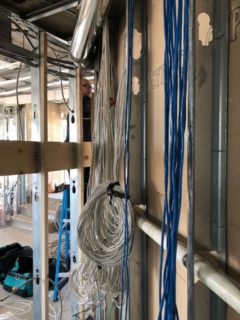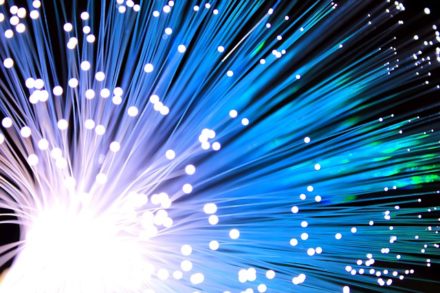The Importance of Prewiring: How to Ensure your Home’s in Good Shape
September 13, 2021
Just like any home needs the right foundations to make it strong and stable, home automation needs the right connected infrastructure in place to work effectively and reliably – and that’s where the importance of prewiring comes in.
What is prewiring?
Simply put, prewiring makes your technology work behind the scenes. Wires are installed as part of the construction/home renovation process, and discreetly hidden behind the walls. The end result – you have all the convenience of distributing internet, tv and audio, and controlling your lighting, shades, heating and security, without exposed wires and any cosmetic impact to your interior.
Why should you prewire:
1) Reliability
Although wifi’s pretty ubiquitous these days, nothing is more reliable than wires connected to wires. Directly connected cables offer you a much more effective experience, minimizing the potential of interrupted service. What’s more, wired connections simply allow for faster delivery of information that wireless technologies cannot compete with. By opting for wired connections from the outset, you’re saving yourself the pain of dealing with inevitable wireless breakdown.
2) Cost
It’s much better to think about the cost upfront in a little pre
-planning, rather than incur the expense of retro-fitting cables into your newly renovated home. Prewiring not only offers sheer simplicity down the line, it’s far less disruptive from an interior design perspective – you don’t have to go to the extent of cutting holes in walls, and then redecorating. Factoring in prewiring for a future project means the cost of integration at a later date will be significantly less if the cable’s already in place.
3) Future proofing
This brings us nicely onto future proofing. The home automation roadmap. Although you may not have the budget today, anticipating what’s on your future smart technology wishlist is the savvy approach to take. As long as you have the right wire framework in place, you’ll always be able to integrate upgrades as technology evolves. It’s best to have a flexible, robust system so you can ensure your home works for today’s, and tomorrow’s technology.
What do you tend to prewire for and what to keep in mind
Data and network
You want to ensure you have a robust network of connected wires so you can browse the internet quickly, and chat over FaceTime without a frozen and distorted picture. It’s best to minimize devices dependent on Wifi as data overload can impact the speed and performance of your network.

Audio & entertainment
The optimum home entertainment experience tends to involve multiple in-ceiling speakers. The bigger the area, the more speakers–and thereby speaker cables–you need to evenly disperse the sound. Then video has a whole new set of cables, generally to completely different locations. With prewiring, you can be assured of a clean, polished finish, rather than a complicated web of wires.
Home security, lighting, and blinds
AC/DC wasn’t just a band – it’s also a key consideration when it comes to home automation. AC refers to the kind of power set up by an electrician, DC is the power that batteries deliver. While home security, lighting, and blinds can be run off batteries, using wiring makes it a much more cost-effective solution and friendly on the environment in the long run. It’s also a more versatile option, able to work with a wider range of products.
What can you expect to pay when prewiring
Depending on the size of the property, you can expect to pay anywhere from $2,000-$20,000. But remember, this cost will be minimal in comparison to the cost of snaking cables at a later date. It also depends on the cables being used – not all cables are considered equal in their quality. The thicker the wire (gauge), the better the quality, particularly when it comes to speaker cables.
It’s also vital to have a plan. A good plan will ensure you’ve got all the possible locations for devices mapped out in advance. You’ll then have a comprehensive cable framework to support your prewiring project and any future upgrades. By working with experienced AV specialists, you can be assured that all your future technology plans are accounted for.

Emergence of fibre optics
We’re now inundated with data and we’ve moved into an age where vast quantities of data are being transferred within our own homes. Our homes are getting smarter, and we’re becoming more reliant on integrated technology on a day-to-day basis. Meanwhile products emerging in the market are requiring increasing amounts of data transfer to operate. While copper wires have been the go-to in the past, they have limits to their data carrying capacity which is restrictive when it comes to high definition video.
Fibre optics have been evolving over the last 30 years, but in recent years they’ve gained the competitive edge. Now available at a much more favourable price than they once were, they’ve become a viable alternative to copper. Far superior in terms of performance, these incredibly thin wires can carry a colossal amount of information packed into a small package – with the ability to communicate faster than any other regular wire, and over far greater distances. To put it into perspective, the seismic shift taking place in the cable space is much like that of cassettes to CDs.
The big fibre optic cable benefit
The increase in performance. Unaffected by electrical interference (the data is transmitted by light not electricity). With far greater capacity to carry data than their predecessors, fibre optics reap huge benefits for consumers.
They’ve paved the way for us to create maximum picture resolution and colour, and the ability for reliable high speed internet and connectivity over a much greater distance – making a significant difference when it comes to home theatres. With the advent of higher resolution products (4K – 4x the resolution of regular HD) and high dynamic range video (HDR) came the need for transferring massive amounts of data – and fibre optics are the ideal and sometimes the only solution!
Running cables inside your home doesn’t have to be a complicated process. By getting AV specialists involved from the beginning, you can be assured of a smart wiring package, customized to your needs. That’s where we come in – matching home technologies with good design. With prewiring as part of the design process, you can get the value you’d expect from your technology – and make everything seamlessly work behind the scenes.
- Crestron Home Reviewed: Seamless Integration, Exceptional Control - March 19, 2025
- Do I need a Control System? - March 20, 2024
- Your Smart Home is Only as Good as Your Integrator: The Importance of Superior Aftercare - May 10, 2023